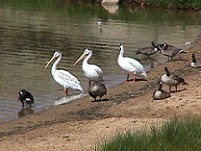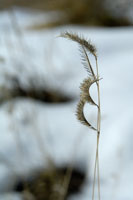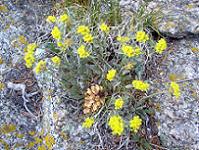This mountain park and reservoir provides a variety of montane wildlife, plant and geological viewing.
Wildlife
 Mule deer, pronghorn antelope, and even an occasional elk, red fox or badger may be observed here, while cottontail rabbits, whitetail jackrabbits, coyote and ground squirrels are found in abundance.
Mule deer, pronghorn antelope, and even an occasional elk, red fox or badger may be observed here, while cottontail rabbits, whitetail jackrabbits, coyote and ground squirrels are found in abundance.
Among the many migratory and resident birds that frequent the area are the plains species of horned lark and meadowlark, mountain bluebird, black-billed magpie, common raven, and a variety of raptors, waterfowl and shorebirds which are all attracted to the reservoir’s water supply. Download a bird list that is common to both  Eleven Mile and Spinney Mountain State Parks.
Eleven Mile and Spinney Mountain State Parks.
Designated a Gold Medal trout fishery, anglers enjoy the cold-water fishing opportunities for cutthroat, rainbow and brown trout, as well as Northern pike. White and long-nose suckers are also present in the reservoir’s waters.
Plants
 Ecologically, the park uplands are dominated by short-grass prairie. This eco-type is heavily populated with grass species that include blue grama, ring muhly, three awn, western wheatgrass, junegrass and squirreltail. Common wildflowers and small shrubs found here include Indian paintbrush, copper mallow, wallflower, sulfur-flower, locoweed, fringed sagewort, rabbitbrush and snakeweed.
Ecologically, the park uplands are dominated by short-grass prairie. This eco-type is heavily populated with grass species that include blue grama, ring muhly, three awn, western wheatgrass, junegrass and squirreltail. Common wildflowers and small shrubs found here include Indian paintbrush, copper mallow, wallflower, sulfur-flower, locoweed, fringed sagewort, rabbitbrush and snakeweed.
A sparse montane coniferous forest grows on the flanks of Spinney Mountain itself. Ponderosa and limber pine are present with an understory of mountain mahogany, rabbitbrush, currant, blue and sideoats grama, mountain muhly, Arizona fescue,  needle-and-thread grass and Spanish bayonet.
needle-and-thread grass and Spanish bayonet.
Diverse wetland, riparian and aquatic plant communities have become established around the reservoir and below the dam. Download a plant list of species found at both Spinney and Eleven Mile.
Geology
The South Platte River Valley is mantled with Wisconsin-aged glacial outwash material. Spinney Mountain is composed of Precambrian rocks, mostly Pikes Peak granite, and at 9,524 feet it over shadows the north side of the reservoir. The park is underlain by Tertiary Denver formation rocks (Cretaceous Pierre and Benton shales) and the Niobrara formation. The latter two are of the Colorado Group.
Find out more detail on the Geology page.

